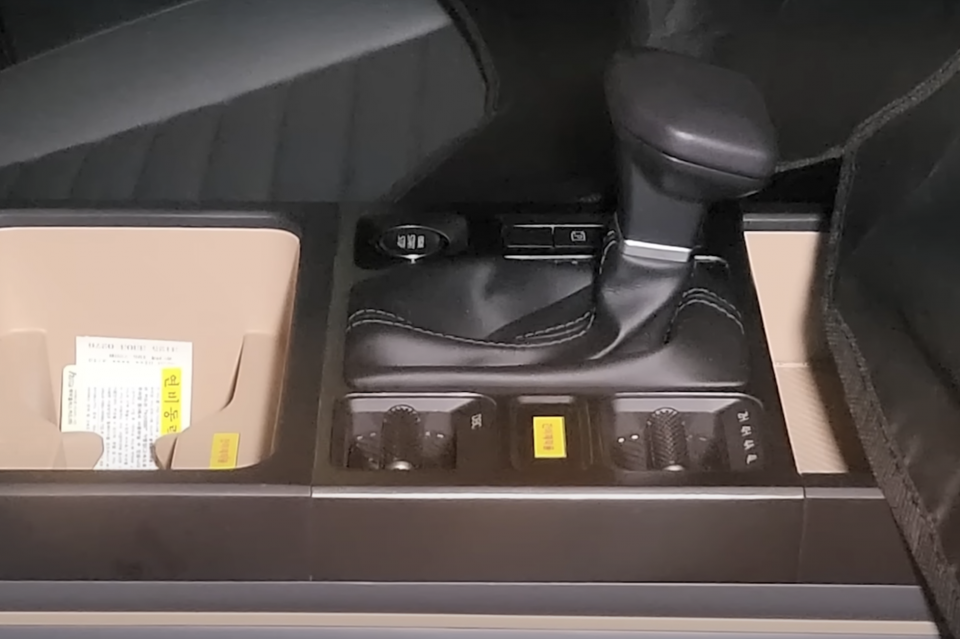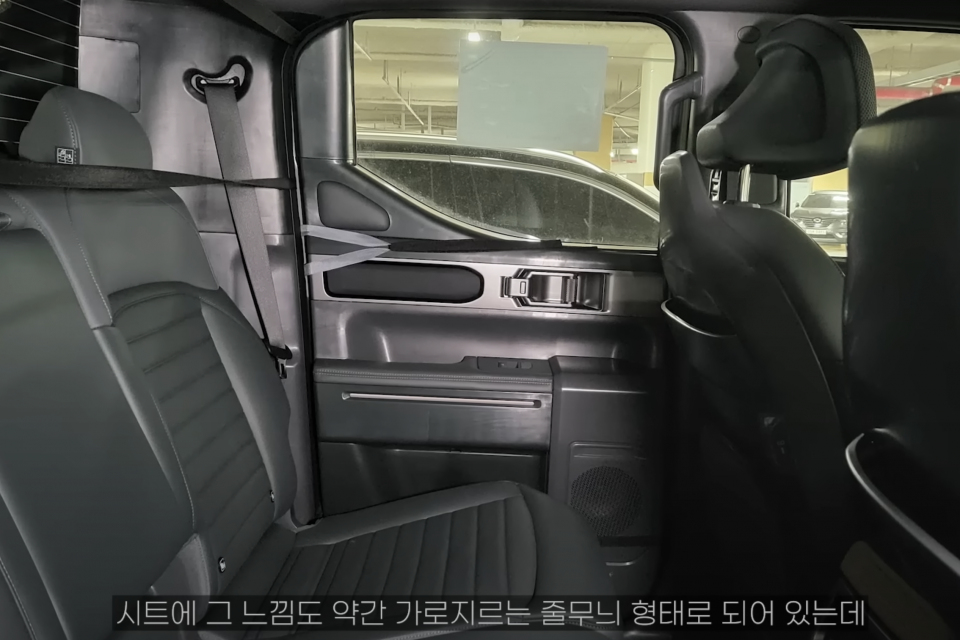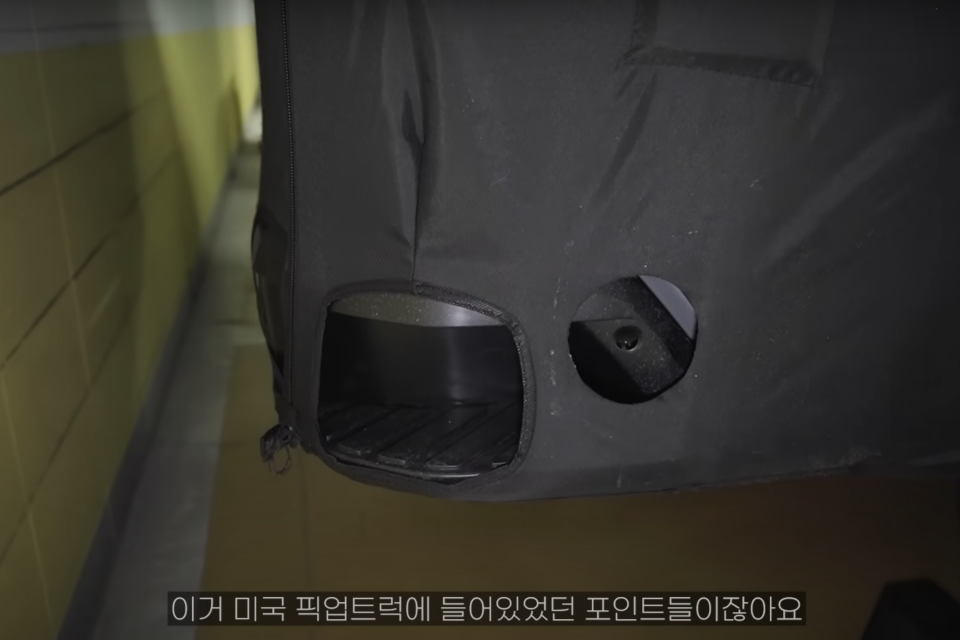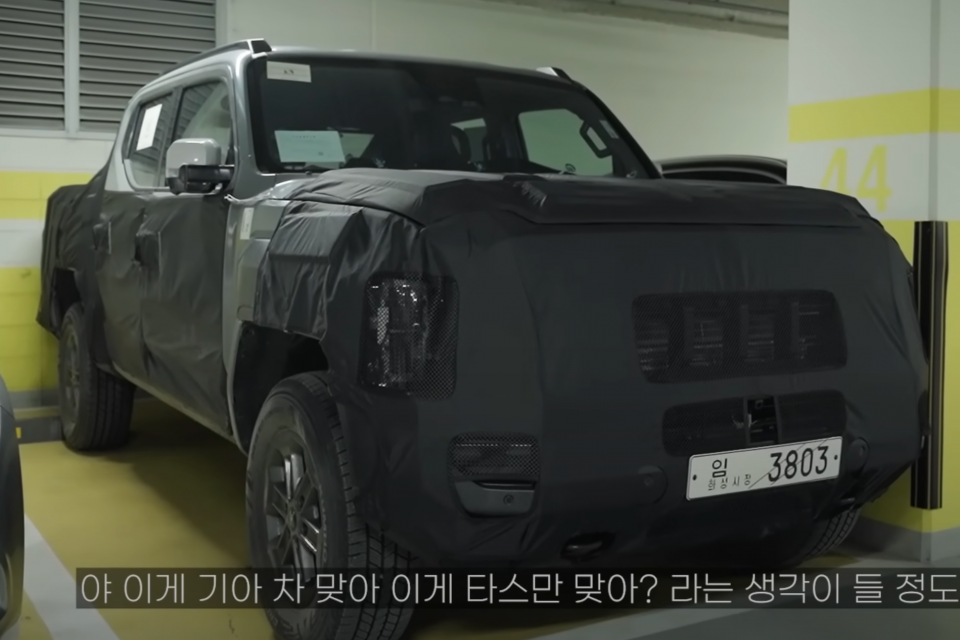

Ben Zachariah
CarExpert's top five ute reviews of 2025
23 Hours Ago

News Editor
Strip away the camouflage, and this is what Kia’s long-awaited dual-cab ute will look like when it launches in 2025.
While previously spied examples of the Kia Tasman have been mules, wearing cobbled-together sheetmetal borrowed from the Mohave SUV, this one spotted by Korean spy video outlet Woopa TV appears to be wearing production sheetmetal.
Additionally, fellow Korean outlet New Autopost has published a set of spy photos.
It’s quite a bluff, boxy body for the brand’s first dual-cab ute, with more upright styling than many rivals, accentuated by the vertically oriented headlights quickly becoming a signature Kia design cue, as well as a tall greenhouse.
The rear bumper features an integrated step, á la the Ford Ranger, to allow easier access to the tub.
While the dashboard is heavily camouflaged, the centre console is largely undisguised.
We can see a rather traditional-looking gear shifter, a start button, as well as a wheel for selecting which two- or four-wheel drive mode to engage. This includes an automatic four-wheel drive mode suitable for on-pavement driving, as seen in rivals like the Mitsubishi Triton.
Referred to internally as the TK, the ute may wear the Tasman nameplate which Kia has trademarked locally.


Kia confirmed last year it was benchmarking the Tasman against the Ford Ranger, Volkswagen Amarok, and Toyota HiLux, particularly in terms of payload and towing capacity figures – a 3500kg braked towing capacity figure, therefore, seems likely.
It’ll offer a diesel engine, and we’d wager all models will feature leaf-spring rear suspension.
As to what diesel engine it will offer, that’s unclear. Kia currently offers a 2.2-litre turbo-diesel four in its Sorento and Carnival, offering 148kW of power and 440Nm of torque.
Whether the company will target the Ranger and Amarok with an optional six-cylinder powertrain is unclear.


The body-on-frame Mohave SUV comes with a 3.0-litre turbo-diesel V6, but it’s getting on in years. Nevertheless, it meets Euro 6 emissions standards, and pumps out 189kW and 560Nm – close to the V6 Ranger and Amarok’s 184kW/600Nm outputs.
The GV80 from fellow Hyundai Motor Group brand Genesis has a 3.0-litre turbo-diesel inline six, but the engine has just been discontinued and no further applications for it have been confirmed.
Kia is targeting 10 per cent of the light commercial vehicle market with the Korean-built ute. That’s just below where the Isuzu D-Max, Australia’s third best-selling ute, sits in terms of market share.
Given Australia’s love of utes – and the relative absence of them in Korea – Kia has been using our market as a testing ground.

Kia Australia product planning boss Roland Rivero said last year “lots of visitors have made the trip” to Australia to experience competitors and local conditions.
A “substantial” amount of work on the ute has been done in Australia, he said, “though a lot of work is ready to go”.
“It’s not different to any other new R&D project, so while it’s evolving, it’s also flexible,” said Kia Australia ride and handling engineer Graeme Gambold.
Kia said last year it isn’t working on an SUV counterpart, which would rival the likes of the Ford Everest and Isuzu MU-X and replace the ageing Mohave.
The Tasman isn’t the only ute Kia is working on, with an electric ute also in development that’s aimed at markets like the US.
Where expert car reviews meet expert car buying – CarExpert gives you trusted advice, personalised service and real savings on your next new car.
William Stopford is an automotive journalist with a passion for mainstream cars, automotive history and overseas auto markets.


Ben Zachariah
23 Hours Ago


Matt Campbell
1 Day Ago


Derek Fung
5 Days Ago


Damion Smy
8 Days Ago


Ben Zachariah
10 Days Ago


James Wong
16 Days Ago